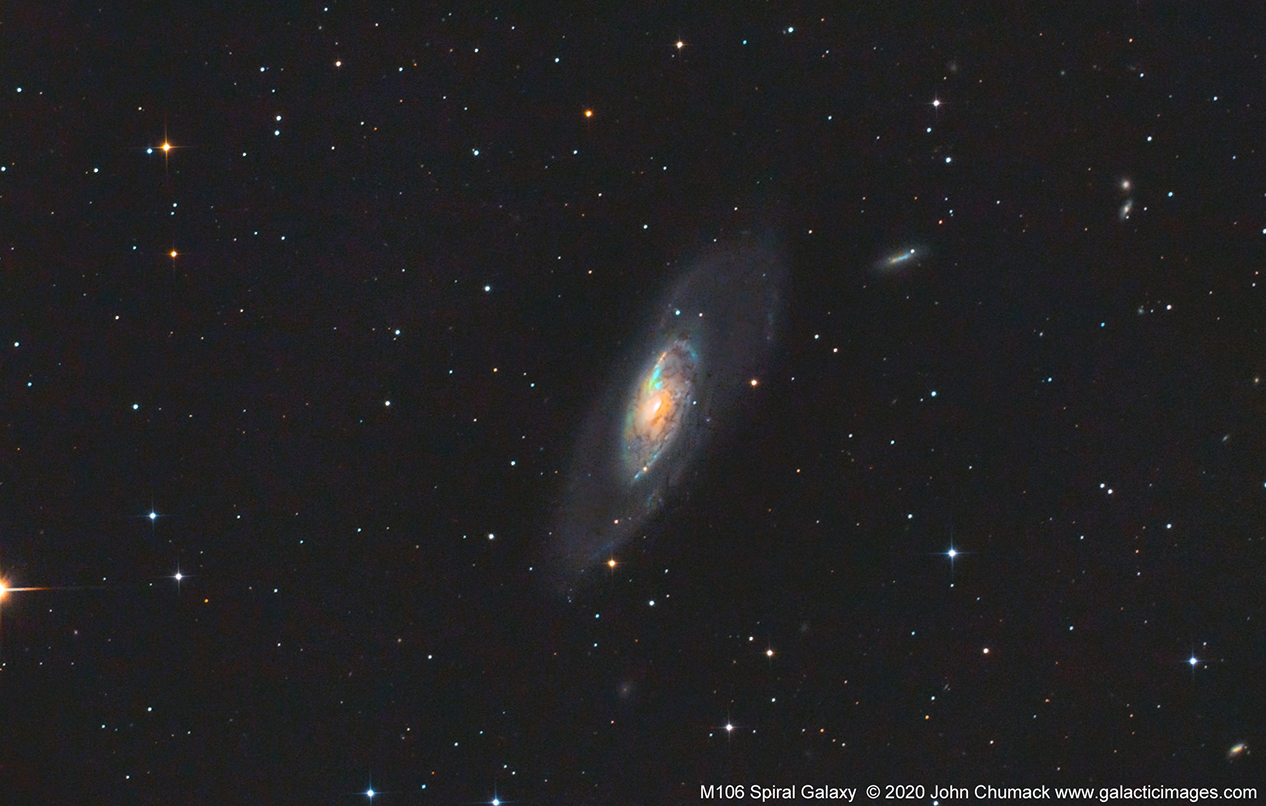Messier 106 or NGC 4258 is an intermediate spiral galaxy in the constellation Canes Venatici.
M106 is about 135,000 light years in diameter. The core of this 8.4 magnitude galaxy is fairly bright, but capturing the faint outer halo is a challenge from the city.
M106 is at a distance of about 22 to 25 million light-years away from Earth. M106 contains an active nucleus classified as a Type 2 Seyfert, and the presence of a central supermassive black hole has been demonstrated from radio-wavelength observations of the rotation of a disk of molecular gas orbiting within the inner light-year around the black hole.
M106 also has a water vapor mega-maser (the equivalent of a laser operating in microwave instead of visible light and on a galactic scale). NGC4248 is the little edge on Galaxy closest to M106. Many little background galaxies are visible as well.
I’ve been working on this one for at least the last 3 months, 10 nights for 16.4 hours of data, but had to toss out about half (8 hours) of the data, due to high passing clouds ruining many shots, from each of the nights data captures. I used my QHY183M Cooled Monochrome(Lum = 3 hours) & QHY183C Cooled Color(RGB = 5.4 hours) and Celestron C6 Newtonian reflector telescope, Baader Coma Corrector, Auto-guided with 60mm Guide scope/QHY5IIL mono camera, on a Bisque MyT Robotic Mount from my backyard in Dayton.
After going through all the images, I managed to assemble 8.4 hours of keepers, Captured & Calibration with the SKY X Camera Software, stacked in Deep Sky Stacker,
Aligned the separate nights images in Maxim DL, processed in Pixinsight, & Adobe CC2020.
Best Regards,
John Chumack
www.galacticimages.com







